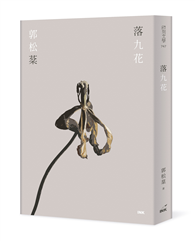Throughout, The Gun animates unforgettable characters—inventors, salesmen, heroes, megalomaniacs, racists, dictators, gunrunners, terrorists, child soldiers, government careerists, and fools. Drawing from years of research, interviews, and from declassified records revealed for the first time, he presents a richly human account of an evolution in the very experience of war.
| FindBook |
有 1 項符合
The Gun的圖書 |
 |
The Gun 作者:Chivers,C. J. 出版社:Simon & Schuster 出版日期:2011-09-06 語言:英文 規格:14 x 21.6 x 3.2 cm / 普通級/ 單色印刷 |
| 圖書館借閱 |
| 國家圖書館 | 全國圖書書目資訊網 | 國立公共資訊圖書館 | 電子書服務平台 | MetaCat 跨館整合查詢 |
| 臺北市立圖書館 | 新北市立圖書館 | 基隆市公共圖書館 | 桃園市立圖書館 | 新竹縣公共圖書館 |
| 苗栗縣立圖書館 | 臺中市立圖書館 | 彰化縣公共圖書館 | 南投縣文化局 | 雲林縣公共圖書館 |
| 嘉義縣圖書館 | 臺南市立圖書館 | 高雄市立圖書館 | 屏東縣公共圖書館 | 宜蘭縣公共圖書館 |
| 花蓮縣文化局 | 臺東縣文化處 |
|
|
圖書介紹 - 資料來源:博客來 評分:
圖書名稱:The Gun
內容簡介
At a secret arms-design contest in Stalin’s Soviet Union, army technicians submitted a stubby rifle with a curved magazine. Dubbed the AK-47, it was selected as the Eastern Bloc’s standard arm. Scoffed at in the Pentagon as crude and unimpressive, it was in fact a breakthrough—a compact automatic that could be mastered by almost anyone, last decades in the field, and would rarely jam. Manufactured by tens of millions in planned economies, it became first an instrument of repression and then the most lethal weapon of the Cold War. Soon it was in the hands of terrorists.In a searing examination of modern conflict and official folly, C. J. Chivers mixes meticulous historical research, investigative reporting, and battlefield reportage to illuminate the origins of the world’s most abundant firearm and the consequences of its spread. The result, a tour de force of history and storytelling, sweeps through the miniaturization and distribution of automatic firepower, and puts an iconic object in fuller context than ever before. The Gun dismantles myths as it moves from the naïve optimism of the Industrial Revolution through the treacherous milieu of the Soviet Union to the inside records of the Taliban. Chivers tells of the 19th-century inventor in Indianapolis who designs a Civil War killing machine, insisting that more-efficient slaughter will save lives. A German attaché who observes British machine guns killing Islamic warriors along the Nile advises his government to amass the weapons that would later flatten British ranks in World War I. In communist Hungary, a locksmith acquires an AK-47 to help wrest his country from the Kremlin’s yoke, beginning a journey to the gallows. The Pentagon suppresses the results of firing tests on severed human heads that might have prevented faulty rifles from being rushed to G.I.s in Vietnam. In Africa, a millennial madman arms abducted children and turns them on their neighbors, setting his country ablaze. Neither pro-gun nor anti-gun, The Gun builds to a terrifying sequence, in which a young man who confronts a trio of assassins is shattered by 23 bullets at close range. The man survives to ask questions that Chivers examines with rigor and flair.
|











